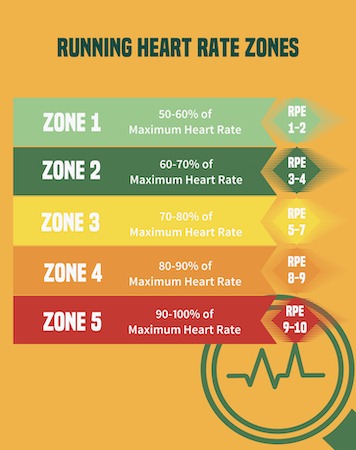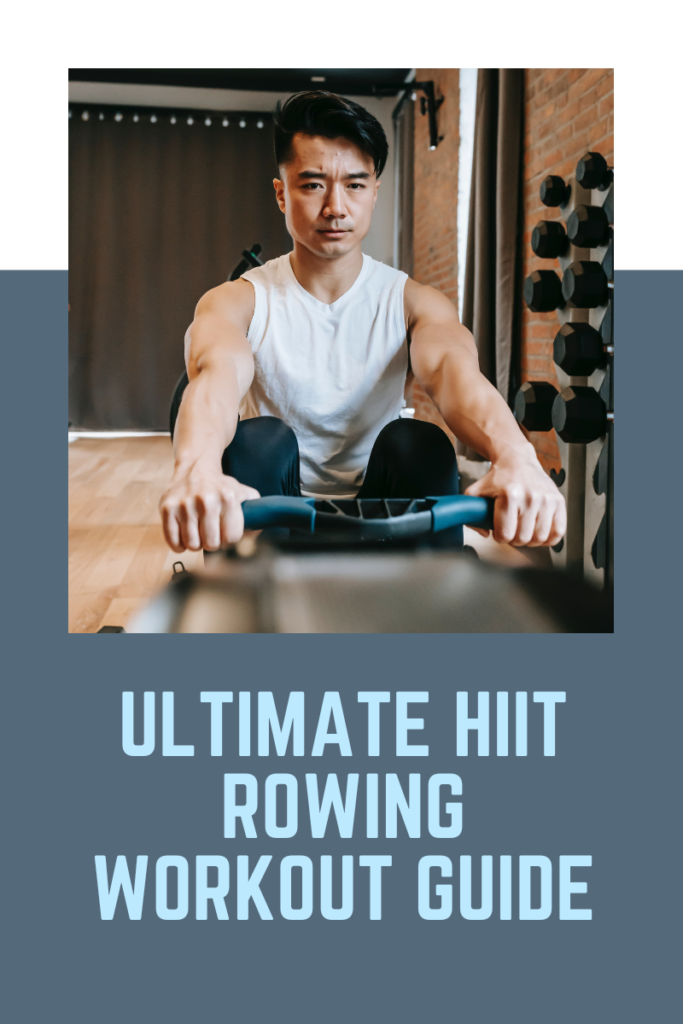Table of Contents
Rowing is a full-body workout that provides an efficient and effective way to burn calories, build muscle, and improve cardiovascular fitness.
However, traditional steady-state cardio can become monotonous and may not provide the same results as a high-intensity interval training (HIIT) workout.
You’ve likely heard the concept of HIIT or High-Intensity Interval Training thrown around as a way to maximize fat loss and muscle growth in a short period of time. How does it work? And can it be applied to workouts on the rowing machine?
In this guide, we will discuss the benefits of HIIT rowing, the science behind it, and provide some 15 minute fat burning rowing workouts to help you get the most out of your rowing sessions.
See also: Best rowing machines under $500
If you’re looking to 10x your training, this guide is for you!
The problem with steady-state cardio
Steady state cardio is how most people perform cardio. It involves applying a moderately challenging pace for a long period of time. This could be jogging on the treadmill for 45 minutes, sitting on the recumbent bike for 30 minutes, or towing 5,000 meters at a steady, easy pace. Steady state cardio is great for cardiovascular strength and overall fitness.
The thing is, It’s not the best for burning fat. Here’s why.
Afterburn – steady state cardio does not create a significant “afterburn” effect, meaning that the body does not continue to burn calories at an elevated rate after the exercise has ended.
Muscle Loss – Steady state cardio can lead to muscle loss, as the body begins to use muscle tissue as a source of energy, rather than fat.
Increased risk of injury – The duration and repetitive force applied during steady state cardio can lead to increased risk of injury, as tendons, joints, and ligaments are worn down by repetitive movements.
So how do we break the cardio paradigm? The good news is that steady-state isn’t our only option.
What is HIIT?
HIIT, or High-intensity interval training is a type of workout that alternates between periods of high-intensity exercise and recovery periods. This approach to exercise allows for more intense and effective workouts in a shorter amount of time. The high-intensity intervals push the body to its limit, leading to increased calorie burn, improved cardiovascular fitness, and increased muscle mass.
The science behind HIIT
The science behind HIIT (High-Intensity Interval Training) is based on the concept of pushing the body to its limits during short bursts of intense exercise, followed by short periods of recovery. This approach to exercise provides a number of benefits over traditional steady-state cardio, such as jogging or cycling at a consistent pace.
Recent studies have shown that HIIT can be an effective way to improve cardiovascular fitness, increase muscle mass, and burn calories. One study published in the Journal of Physiology found that HIIT can increase cardiovascular fitness as effectively as traditional steady-state cardio, but in much less time. Another study, published in the Journal of Obesity, found that HIIT can lead to greater fat loss than steady-state cardio.
The effects of HIIT are believed to be due to the intense nature of the workout, which leads to an increased production of growth hormone and testosterone. These hormones help to increase muscle mass and promote fat loss. Additionally, HIIT has been shown to improve insulin sensitivity and glucose metabolism, which can lead to a decrease in the risk of type 2 diabetes.
HIIT is being applied in professional sports in a variety of ways. Many sports teams now use HIIT as part of their conditioning programs to improve cardiovascular fitness, increase muscle mass, and burn calories. HIIT is also commonly used as a way to improve the performance of endurance athletes, such as marathon runners and triathletes.
Additionally, HIIT has been applied to rehabilitation after injuries and surgeries in professional sports, with the goal of returning to the sport as fast as possible while avoiding re-injury. In recent years, scientists have been investigating the effects of HIIT on muscle oxygenation, and its effect on muscle fatigue, which is particularly important for sports that require high-intensity activities.
Why is HIIT Rowing so effective:
There are many benefits of interval training on rowing machines. Rowing is a full-body workout that engages the legs, core, and upper body. When paired with HIIT, the rowing motion provides an intense workout that burns through fat and calories if applied properly. Rowing is the perfect candidate for HIIT, it’s easy on the joints, works out the whole body, and can quickly get the heart rate up.
HITT preparation:
Before starting any HIIT workout, it is important to properly prepare your body. This includes a proper warm-up, such as 5-10 minutes of light cardio and dynamic stretching, to prepare your muscles for the workout. It is also important to stay hydrated and properly fuel your body with a balanced diet.
Heart Rate Zones:
To get the most out of your HIIT rowing workout, it is important to understand heart rate zones. The two main zones for HIIT are the high-intensity zone (80-90% of maximum heart rate) and the recovery zone (50-70% of maximum heart rate). By understanding these zones and how to train in them, you can maximize the benefits of your HIIT rowing workout.

See also: Best Heart Rate Monitors for Rowing
Incorporating HIIT into your rowing workouts
Use HIIT rowing as a cardio substitute: Instead of doing steady-state cardio such as running or cycling, substitute in a HIIT rowing workout. This will provide a full-body workout while also improving cardiovascular fitness.
Incorporate HIIT rowing into your overall training program: Schedule HIIT rowing workouts into your overall training program. For example, you could do HIIT rowing on Mondays, steady-state rowing on Wednesdays, and a long row on Saturdays.
Use HIIT rowing as a way to break through plateaus: If you have hit a plateau in your rowing training, incorporating HIIT rowing can provide a new challenge and help you break through.
Incorporate HIIT rowing as a finisher: At the end of your regular rowing workout, spend the last 5-10 minutes performing a HIIT rowing circuit. This will provide an extra challenge and burn more calories.
It is important to note that when incorporating HIIT rowing into your overall rowing training, it is important to listen to your body and not overdo it. HIIT rowing is intense and should be done with caution, it is also important to have a proper warm up and cool down.
HIIT fat burning row workouts
Tabata Rowing: This workout involves rowing as hard as you can for 20 seconds, followed by 10 seconds of rest. Repeat this pattern for 8 rounds, for a total of 4 minutes of intense work. If you’re up for it, you can add more sets. 8 minutes total is enough to give anyone a great fat-burning rowing workout.
Interval Rowing: Set the rower to a moderate resistance and row for 1 minute at a steady pace. Increase the resistance for the next minute and row as hard as you can. Alternate between the two resistance levels for a total of 10-15 minutes.
Rowing Sprint: Row at a steady pace for 2 minutes, then increase the resistance and row as fast as you can for 30 seconds. Repeat this pattern for a total of 10-15 minutes.
Rowing Pyramid: Row at a steady pace for 1 minute, then increase the resistance and row for 30 seconds. Reduce the resistance and row for 1 minute, then increase the resistance and row for 30 seconds. Repeat this pattern, building a pyramid of increasing and decreasing resistance for 10-15 minutes.
Rowing Ladder: Row at a steady pace for 1 minute, then increase the resistance and row for 30 seconds. Reduce the resistance and row for 30 seconds, then increase the resistance and row for 1 minute. Repeat this pattern, building a ladder of increasing and decreasing resistance for 10-15 minutes.
Rowing Circuit: Row at a steady pace for 1 minute, then perform a strength-training exercise for 30 seconds (such as push-ups or squats). Repeat this circuit for 10-15 minutes.
Reverse Tabata Rowing: Row as hard as you can for 10 seconds, followed by 20 seconds of rest. Repeat this pattern for 8 rounds, for a total of 4 minutes of intense work.
Check out this great rowing workout from Darkhorse
Conclusion
If you want to accelerate your fat loss, improve cardiovascular and muscular strength, and keep your rowing workouts interesting, you can incorporate HIIT into your rowing workouts. You can get a satisfying, fat burning row workout in 15 minutes or less with HIIT.
Do you have a HIIT workout you’d like to share? Comment below!

